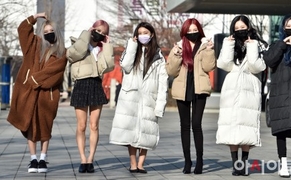 |
South Korea's public institutions hired about 20,000 new employees last year, while their collective debt ratio declined for the first time in three years.
According to management data from 331 public institutions disclosed by the Ministry of Economy and Finance on the ALIO platform on April 30, the total workforce of public institutions stood at approximately 423,000 as of the end of 2024, up by about 2,000 from the previous year. The number of public institutions increased to 331, four more than in 2023.
The number of new hires remained steady at around 20,000. Among the major contributors were Korea Railroad Corporation with 1,600 new recruits, the National Health Insurance Service with 900, and Korea Electric Power Corporation with 600. The Ministry noted that the continuous decline in new hires—from 30,000 in 2020 to 26,000 in 2021, 25,000 in 2022, and 20,000 in 2023—was due in part to a drop in recruitment by public healthcare institutions following the easing of COVID-19.
As for financial performance, 328 non-bank public institutions recorded total assets of 1,151.9 trillion won and liabilities of 741.5 trillion won last year. Their net income amounted to 8.1 trillion won.
While South Korea’s public institutions saw a 31.8 trillion won increase in debt last year, both the debt ratio and the rate of debt growth declined, driven by improved performance at major utilities and structural financial adjustments.
The combined debt ratio of public institutions dropped from 183.0% in 2022 to 180.6% in 2023—a 2.3 percentage point decrease and the first decline in three years. The Ministry of Economy and Finance attributed this to improved earnings at Korea Electric Power Corporation (KEPCO) due to higher utility rates and falling global energy prices, as well as reduced interest expenses and stronger overseas business profits at Korea Gas Corporation, which returned to profitability.
Despite the overall decline in the debt ratio, some institutions reported significant increases in liabilities. The Korea Housing Finance Corporation saw an 8.7 trillion won rise, driven by expanded bond issuance to support long-term mortgage programs. Other notable increases were reported at Korea Land and Housing Corporation (7.3 trillion won), Korea Expressway Corporation (3.2 trillion won), and the National Health Insurance Service (3 trillion won). KEPCO’s debt rose by 2.9 trillion won—still far less than the 9.7 trillion won increase seen the year before.
Average annual compensation for public institution employees stood at 72 million won in 2023, up 2.6% from the previous year. For heads of public institutions, average pay reached 191 million won, also reflecting a 2.6% rise. Total welfare expenditures fell by 2.7% to 818 billion won, with per capita spending declining 3.0% to 1.87 million won.
Parental leave usage continued to rise. A total of 25,284 employees took parental leave last year, an increase of 668 from 2022. The government attributed this to strengthened family-friendly policies and broader support for work-life balance, including flexible hours during pregnancy and parenting and the expansion of workplace childcare centers.
Male participation in parental leave increased notably—from 5,820 users in 2022 to 6,678 in 2023—while the number of female users dropped slightly to 18,606. The male parental leave usage rate reached 26.4%, continuing a gradual upward trend over the past five years: 16.7% in 2020, 17.8% in 2021, 22.6% in 2022, and 23.6% in 2023.
Most Read
-
1
-
2
-
3
-
4
-
5
-
6
-
7





















